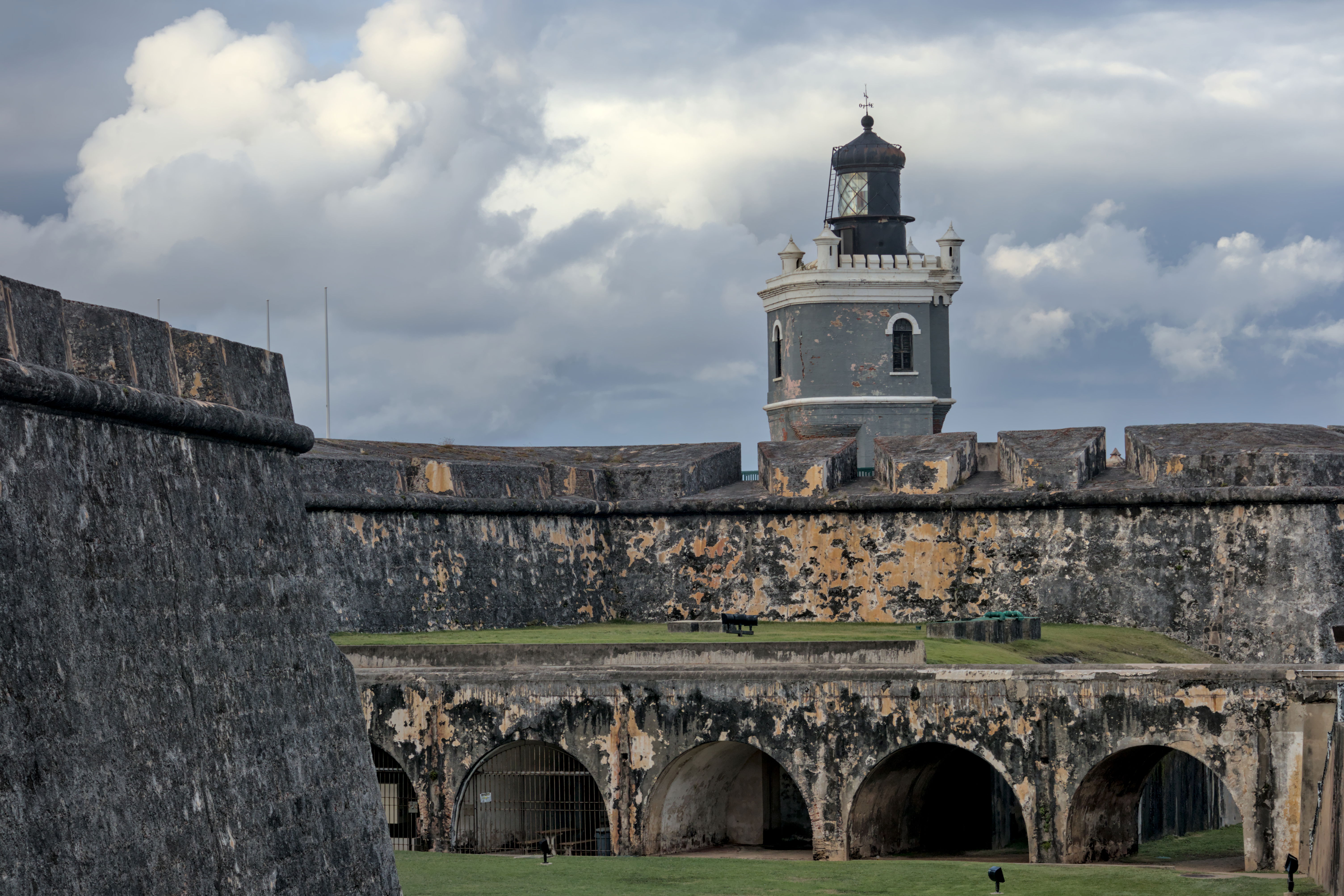
Just minutes from the San Juan Port a massive structure built in masonry can be seen on the eastern tip of Old San Juan inlet. The San Juan National Historical is known as Fort San Cristobal.
This massive citadel constructed centuries ago was aimed to protect San Juan bay from European nations. It contained a rampart large enought and capable of stopping any projectile intended to inflict damage from any angle. And Yes, the fortresses withstood the battles all fought within a short distance of these fortresses.
The rich history of this fort San Cristobal will takes us on a journey of important events that catapulted and rose to it's highest pinacle. San Juan bay became the front door to the west indies.
Why fortresses were built in the first place will help us understand the causes that led to numerous military conflicts over a span of four centuries. This window of intruiging facts will permit us to dig deep into the root and discover the truth on what really happened.
For hundreds of years the Spanish soldiers defended San Juan and it's people. Cannon emplacements often seen today in old town were placed in positions to dislodge heavy projectiles against enemy ships. What the spanish empire had feared most was loosing Puerto Rico, the most important military stronghold in the carribean.
In 1625 the dutch army invaded Puerto Rico in hopes to conquer the island. The battle which lasted for 40 days and at the end, the spanish soldiers and perhaps the most heroic of all who truly proved worthy of honor and resilience. He name was Juan de Amezquita, who at last became the main protagonist and ultimate hero, san juan prevailed to a dramatic victory for the island of Puerto Rico. Puerto Rico defeated the dutch in 1625.
A decision had been made to expand a defense system strong enought to serve as a barrier against their adversary and indeed the results had paid off right at the end.
San Cristobal embodies more than just the size and massive thick walls seen today. In 1765, Alejandro O'Reilly and Thomas Odalys, both serving for the Spanish crown, did the unimaginable by engineering a fortress so large but yet capable of stopping anyone who even dared to face an army so powerful, an army with a strong regiment willing to die for their cause.
These massive sandstone block walls covered with limestone and sandstone deterred any cannons from penetrating through its walls.

Many Artisans, craftsmen and carpenters had undertaken challenges far more difficult than what they had imagine. Thousands of slaves were given the task of working in the nearby quarries. Many had not survived due to its force labor impose by the Spanish authorities in a very difficult time.
Once the fort had finally been completed, it became the strongest fort ever essembled by the spanish crown.
After four-hundred years under spanish rule. Puerto Rico became an american territory. The spanish american war and their naval forces began launching cannons destroying important landmarks that including buildings and churches in old San Juan.
Finally it all had come to an end when the piece treaty had finally been signed. Puerto Rico becomes an american territory.


